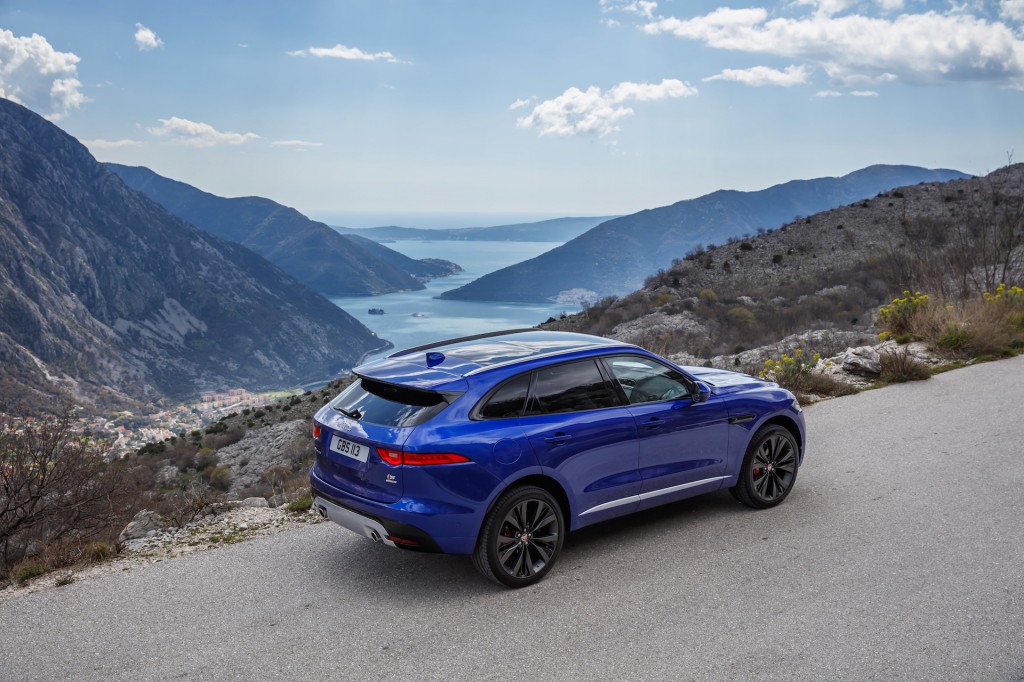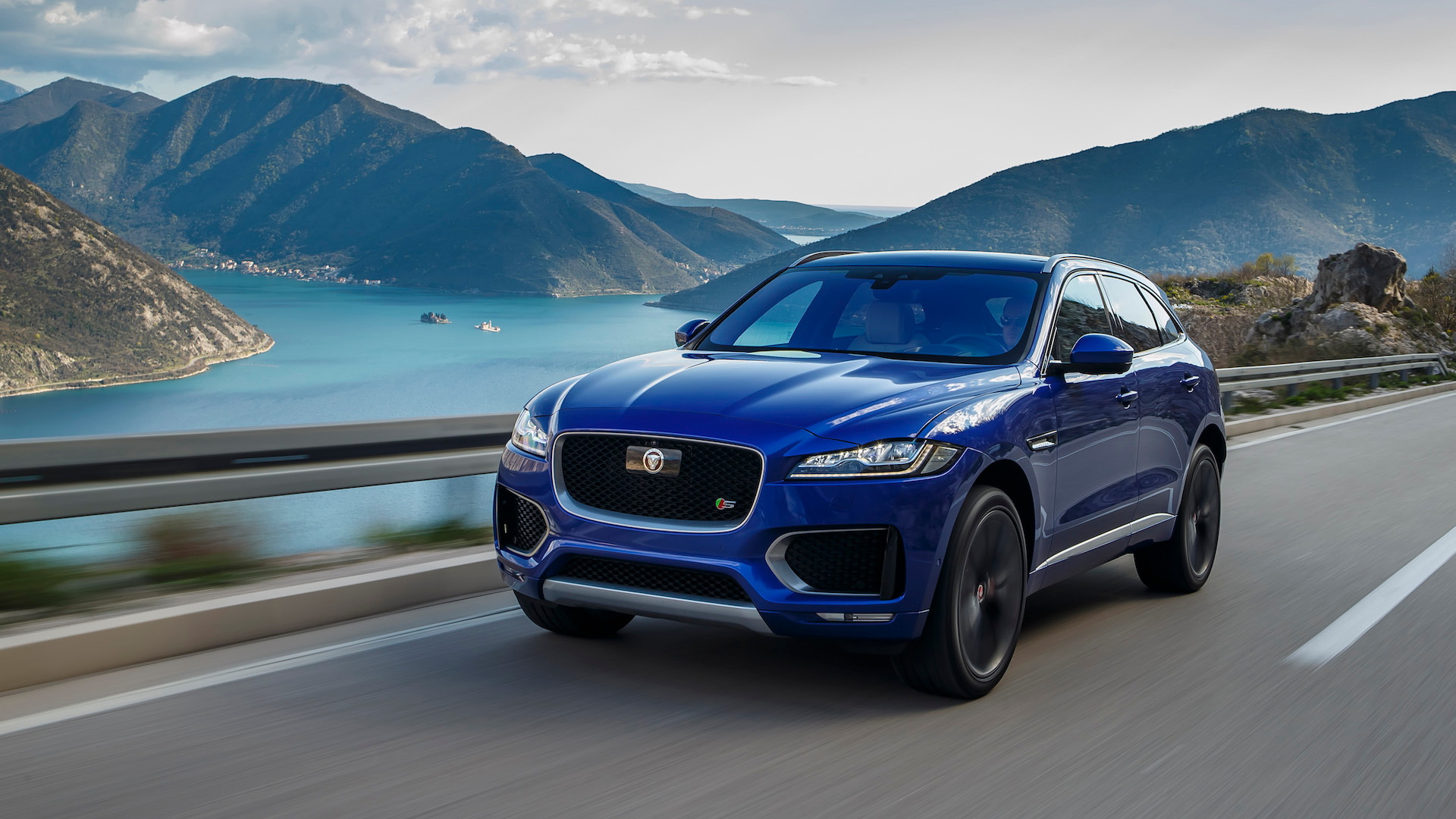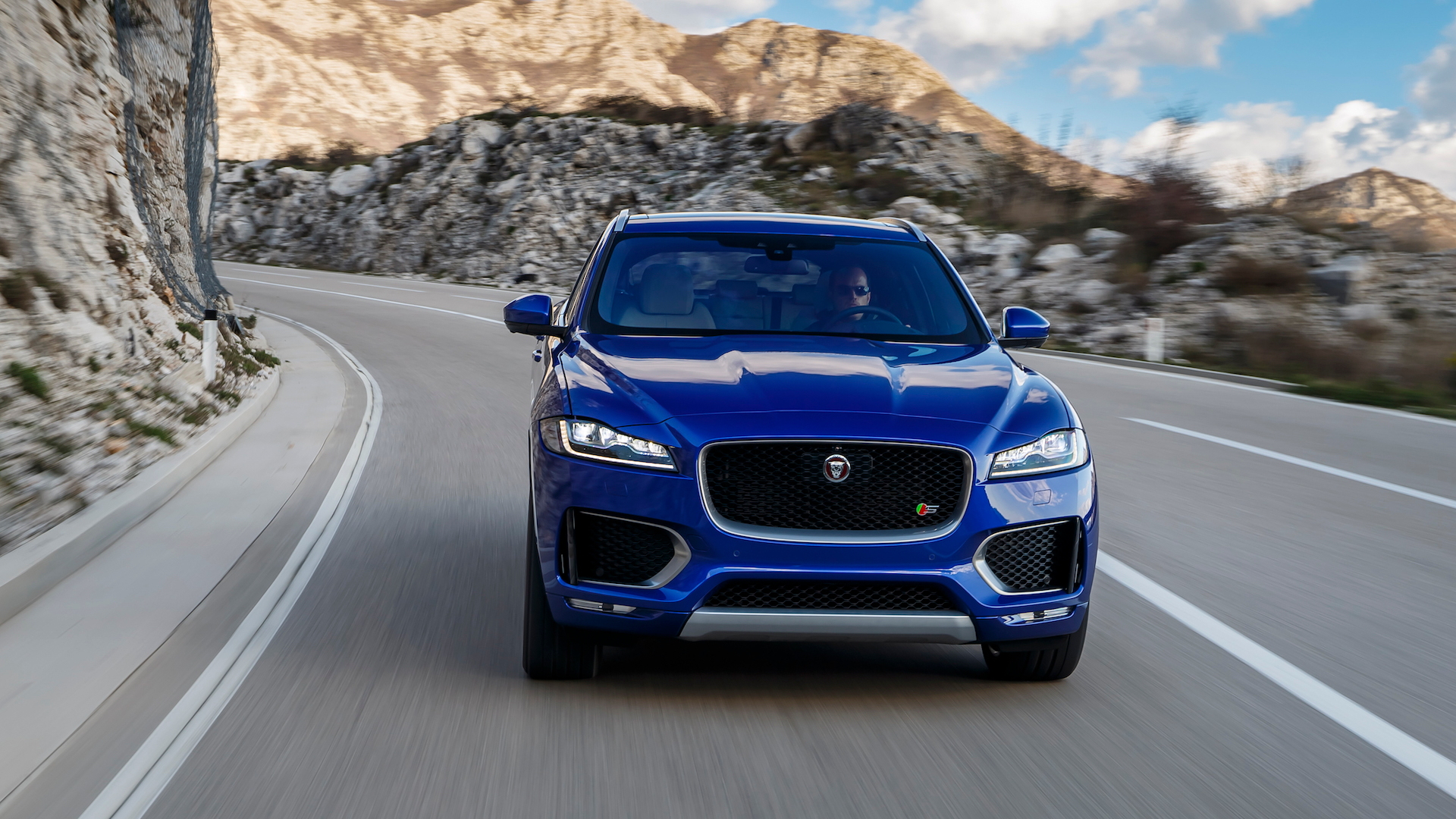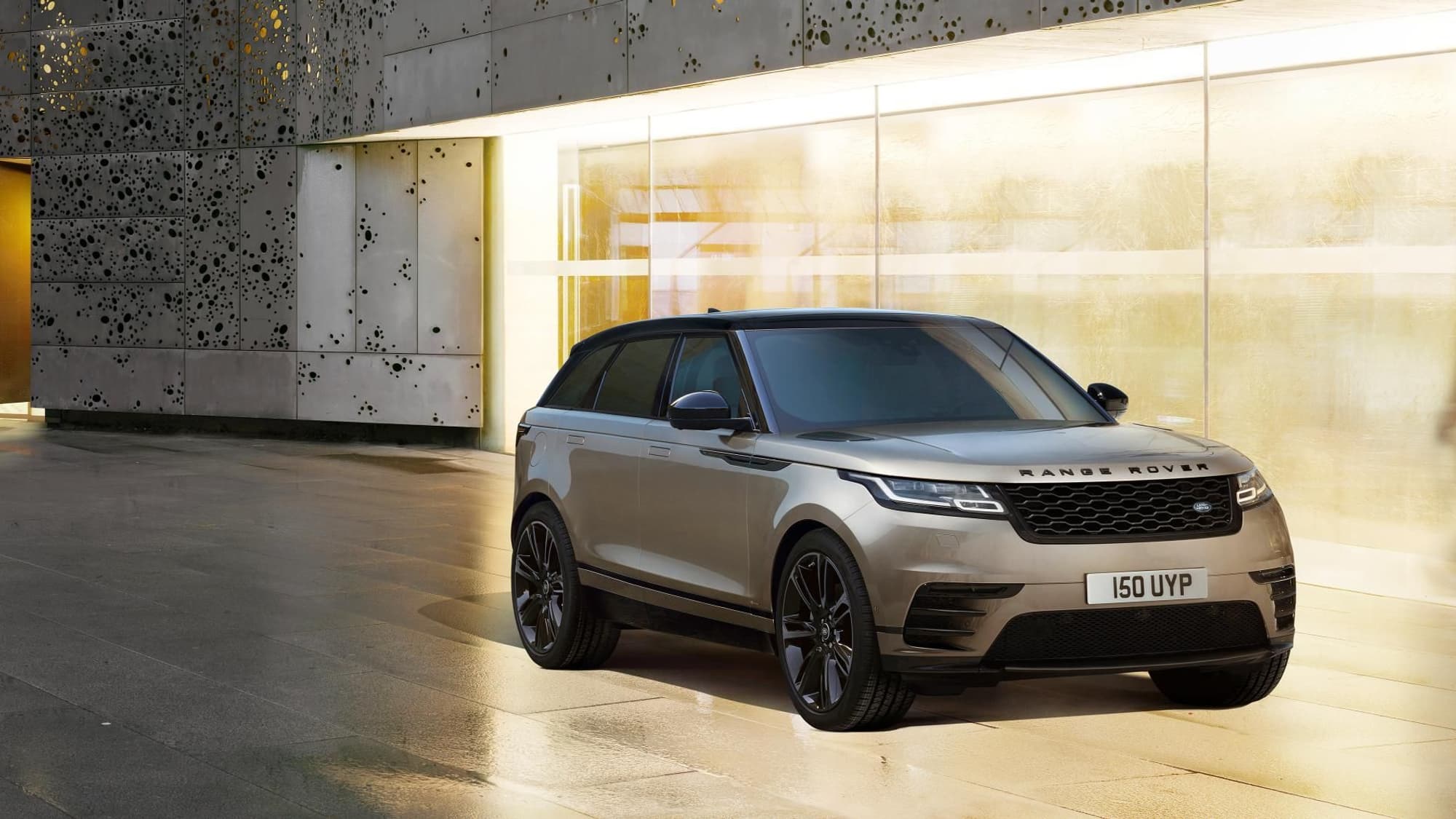Montenegro is mostly off the radar of Americans. We kind of know Yugoslavia, even though it no longer exists.
Montenegro's a part of the former Yugoslavia, a rocky promontory wedged between Croatia and Albania, deep in Game of Thrones territory. Largely unscathed by the decades of civil war that erupted all around it at the turn of the last century, it's chockablock with staggeringly beautiful scenery.
It's a proto-Monaco, hanging over the Adriatic Sea, guarded by steep cliffs that arch over the water in a pitch-perfect imitation of Malibu, just minus the people. Highways are hundreds of miles away, travel hubs like Frankfurt, Paris, and Rome are hours away by plane. Yes, a thousand times, yes.
READ: Claim of wagon demise at Jaguar incorrect, says design chief
It may be off the beaten path, but Montenegro begs for a deep dive behind the wheel of a multi-talented, multi-purpose vehicle. It marries up warm sunny skies, boulder-strewn off-road paths, and hairpin upon hairpin of challenging two-lane roads.
It's a perfect spot for a first drive in the 2017 Jaguar F-Pace, a crossover that's sure to lure drivers from Porsche's Macan and Audi's Q5. Sure to transform the Jaguar brand as much as its return to aluminum bodies more than a decade ago.
Crossing the Land Rover divide
For Jaguar, the F-Pace blurs the hard line that used to divide it from its rugged companion, Land Rover.
It's a big leap into the world of SUVs, where Porsche broke ground and made it acceptable for cachet brands to dip their toes in the murk. It's as big a risk--with as much potential upside--as the SUV from another British brand venturing off-road for the first time this year, Bentley.
Some 90 percent of F-Pace buyers will never have considered or bought a Jaguar before. The sales forecast is as bright as the 78-degree sky above as we decamp from a 17th-century fortress converted into a luxury resort, and head for the hills.
Jaguar’s known for its audacious F-Type sports car and its luxurious sedans. From the first few miles, it's clear. From now on, Jaguar is going to be known for utility, too, utility with an appropriate edge.
That's because the 2017 Jaguar F-Pace feels much more like a taller companion piece to the XF sedan than it does a part of the mainstream SUV slipstream.

2017 Jaguar F-Pace

2017 Jaguar F-Pace

2017 Jaguar F-Pace

2017 Jaguar F-Pace
Jaguar F-Pace design
It’s the first SUV from Jaguar ever, but can the F-Pace put great road manners at the top of its priorities—and make itself what Jaguar calls its most useful sports car?
It all starts with styling. The F-Pace may have an awkward name, but there’s nothing awkward about the way it looks. It’s a handsome SUV that fits right in with the new XF and XE sedans.
The sleek sideview is pure crossover, but the details are pure Jaguar. The F-Pace has a tall mesh grille and signature LED lighting, (full-LED headlights are available)--it's all arranged on a taller plane.
Long vents pierce the front fenders, and the side windows are steeply tapered. At the back there’s a half-circle taillight that echoes the round light pipes on the XE and F-Type.
WATCH: How turbocharger wastegates work
For a British car, the F-Pace has a very Germanic feel inside. The cabin has a spare, tailored look like that of the XE and XF. Big panels of piano black trim get thin metallic borders, with wood and ambient lighting framing the rest of the cabin.
The underlying theme seems to be respectability. Jaguar's been transforming into a more discreet version of itself, and it's largely abandoned the glitz of the first cars it built in its post-Ford iteration. Remember the "heartbeat" lighting and power-vent cues of the original XF?
Jaguar's rotary drive controller rises from the center console, a chrome island surrounded by swaths of piano-black trim. Narrow strips of well-marked buttons run climate and traction controls. As finishing touches, the F-Pace wears polite amounts of aluminum and wood trim and ambient lighting.
The cockpit can come off stark and dark—lighter color choices look better, and wood does, too. The available houndstooth metal trim doesn’t read as well as the real grain or the stock piano-black plastic.
Touchscreens and digital displays factor in conspicuously. There's an 8.0-inch interface on base versions with a streamlined infotainment interface. A more capable system brings a 10-inch center screen with gesture control, and a 12.3-inch screen that replaces the twin-dial gauges with an adaptive display that can switch from "dials" to a full-screen navigation display.
Jaguar F-Pace performance
Jaguar wants the F-Pace to rival SUVs like the Macan, the X3, and the GLC, so it’s given the new crossover a lightweight aluminum body, plenty of power, and road manners that evoke Jaguar sedans and Range Rovers equally well.
When it goes on sale this summer, the F-Pace will be outfitted with a supercharged V-6 of two different power levels. In lower tune, the F-Pace kicks out 340 horsepower; in higher-performance trim, it makes 380 horsepower. That latter version is good for 60 miles per hour in about 5 seconds, and a top speed of 155 miles per hour, according to Jaguar's estimates.
CHECK OUT: 2017 Audi A4 preview
Soon, a turbodiesel inline-4 will be available. With 180 horsepower and 317 pound-feet of torque, it’ll hit 60 miles per hour in about eight seconds. It's the torquey, miserly version for the crowd stepping down from angular Range Rovers: it's perfectly suited for off-roading, and fuel economy should hover near 35 miles per gallon on the highway--for those who aren't diesel-averse, given VW's ongoing PR catastrophe.
The choice between its engines really does depend on where you drive. The F-Pace for the open road carries the supercharged V-6. It’s quick and makes no bones about its sporting intentions. The V-6 exhaust note is always present, though, and it can get tiring on long interstate drones. It's overboosted and undercuts the cabin's serene themes.
The turbodiesel F-Pace is less vocal, more gradual, more relaxed no matter what kind of road. It’s slower, and passing power isn’t overwhelming, but the diesel can trundle over rocky paths with the measured 800-rpm pace of a Range Rover.
Driving modes and off-road hardware
All F-Paces get a rotary-controlled 8-speed automatic (with paddle shift controls on the S model) and a programmable driving-mode system that lets the driver tailor throttle delivery, shift timing, and traction-control settings based on the driving surfaces. Select snow/ice, wet pavement/gravel, or a deep-snow mode, and the F-Pace adjusts its power delivery accordingly.
The F-Pace is the first Jaguar to offer standard all-wheel drive. It’s a new chain-driven system that lets power split from a heavy rear bias to a neutral split from the front to the rear wheels. The setup can constantly vary which wheels get power, based on acceleration and cornering forces.
It's a key part of delivering real off-road ability in the F-Pace. Even though it's fitted normally with 18-, 20-, or even 22-inch all-season tires, the F-Pace can pick its way around rocks and mud thanks to some Land Rover-like specs.
The F-Pace has up to 8.4 inches of ground clearance, and approach and departure angles of 25.5 degrees and 25.7 degrees, front and rear. It can wade through water up to 20.7 inches high.
We trundled across old roads hacked into stony hillsides and worried mostly about cutting a tire. The F-Pace's suite of electronics handle hillclimbs and descents flawlessly. Forget the days of manual transmissions and manual locking hubs--vehicles like the F-Pace remove the skill and the challenge from moderately difficult off-pavement treks.
For almost every driver we can think of who might be interested in driving a Jaguar SUV, that's entirely appropriate.

2017 Jaguar F-Pace

2017 Jaguar F-Pace

2017 Jaguar F-Pace
Jaguar F-Pace ride and handling
The F-Pace is kin to the hardier vehicles sitting across the showroom, but it’s no Land Rover.
No, its prime directive is to handle and ride like a Jaguar, to be the most practical sports vehicle the brand sells.
Physically, it stays grounded in the performance-car terra firma with dynamic hardware derived from the XF and XE. It has control arms in front and a rear suspension linked directly to the subframe. Many of those pieces are cast in aluminum. Monotube dampers are standard, but the F-Pace also offers adaptive air dampers as an option.
Steering is variable-ratio, driven by electric motors, tunable in the F-Pace's driving modes. The brakes can simulate torque vectoring by clamping on an inside wheel to tighten the cornering line.
For most of our 300-mile loop of Montenegro, we took to very narrow lanes, including a series of 16 hairpins descending into the valley of Kotor, a UNESCO World Heritage site. There's a reason it's known as the southernmost fjord in Europe--the valleys are missing only snow to mimic their Norwegian mirror site.
Having driven those Scandinavian roads just last year, the parallels were keen.
With the F-Pace, Jaguar’s delivered an SUV with the sporting edge you’d expect from its name. There’s a Teutonic feel in its tightly controlled ride and linear, progressive steering. The tires work hard to keep up with its 4,000-pound curb weight, but the F-Pace's extraordinarily stiff body and suspension deflect most of the stuff laying on Montenegro's mildly broken roads with fluency.
The F-Pace does far better dynamically than some of the class champs. There's very little head toss, a sign of too-stiff dampers, and excellent body-motion control. It was exhilarating, not exhausting, to whip around a set of 16 hairpins down into an achingly gorgeous ravine that looks like Europe’s southernmost fjord.
It's noticeably more at ease on the 20-inch wheels and tires, the setup engineers chose as the happy medium. The optional 22-inch tires (on Pirelli P Zeros we won't get in the U.S.) give great grip, at some cost to ride quality. With the 20s, the F-Pace is more absorbent, and steering feel is just plain better. There’s not as much wheel mass to overcome, and finer inputs are easier to execute.
Even before the F-Pace dials up sport mode in its driving systems, it can slice and dice about as well as the XFs we've driven. There just aren't any dynamic downfalls to the package. There's nothing to suggest you're not driving in a modern-day Jaguar. The F-Pace as close as any SUV has come to matching Porsche's pinnacle of SUV form factor and sport-sedan dynamics.
Jaguar F-Pace comfort and safety
Excellent road manners are expected, but SUVs also have to deliver on practicality, even if there’s a leaper on the badge.
The F-Pace holds up the utility end of the bargain with a five-seat cabin good for as many adults. It sits between the XE and XF in size—it’s roughly the same dimensions as an Audi Q5—and has a high driving position for the commanding view of the road that draws drivers to SUVs in the first place.
The F-Pace's riveted-and-glued aluminum body (well, mostly: the F-Pace has a composite tailgate and a magnesium cross-vehicle beam for safety) lines up neatly in the Q5/Macan spectrum. It rides on a 113.1-inch wheelbase, is 186.3 inches long, and sits 65.6 inches high.
Interior space is fine, with an inch to spare at least in all directions, with tall drivers leaving room for tall passengers in back. The F-Pace has very firm and flat seats, with just a bit of lumbar adjustment. Jaguar’s plushly padded past is long gone. The second-row seats are split 40:20:40 and have a power-recline features.
DON'T MISS: 2019 BMW X3 M spy shots
The cabin can seem more confining than it is. There's no sloping roofline like an X4 or GLC Coupe, but the F-Pace's door panels sit high.
It also makes some fiddly ergonomic choices. The window switches sit high on the door caps, and the lock button is low, where you expect the window controls to be. The strip of switches for driving modes is impossible to find and flick without taking your eyes from the road.
When you need room for more cargo, the second-row seats split and fold three ways, and power-recline for road trips. The power tailgate opens with the wave of a foot, and there’s a reversible cargo panel in case you’re bringing home something very dirty.
When the back seats are in use, the F-Pace has 33.5 cubic feet of cargo space; when they're folded flat, that space increases to 61.4 cubic feet.
For safety, there’s a slew of high-tech features. In addition to the usual airbags and stability control, the F-Pace has a low-speed traction-control system that can launch it more smoothly on ice or slippery surfaces by balancing brake and throttle.
The F-Pace hasn’t been crash-tested but it can be fitted with forward-collision warnings with automatic braking, adaptive cruise control with stop-and-go control, lane-keeping and lane-departure warning systems, a laser-projected head-up display, blind-spot monitors with cross-traffic alerts, and automatic parking assistance, which is made possible by a set of stereo cameras set behind the windshield.

2017 Jaguar F-Pace

2017 Jaguar F-Pace

2017 Jaguar F-Pace

2017 Jaguar F-Pace
Jaguar F-Pace features and pricing
It adds up to a right-on-target luxury SUV, but how does the F-Pace do in..stuff? Prices start just under $44,000, and standard gear includes the usual power features, Bluetooth, a USB port, satellite radio, and a touchscreen infotainment system.
Also standard: a version of Jaguar's InControl interface, which uses an 8.0-inch touchscreen to direct control over various entertainment, navigation, and smartphone functions--with voice commands and steering-wheel controls used as other means of input. Navigation itself is an option, with data stored on SD cards.
A more capable system arrives in the form of InControl Touch Pro; it uses a 10.2-inch touchscreen with gesture control, paired with a 60GB solid-state drive to add on pinch-and-zoom controls, full-screen navigation, and a customizable home screen. With available data services, the system can predict fuel levels needed to reach a destination, can find parking spaces, and can show a 360-degree view of the destination when the car approaches for easier navigation.
The Pro interface comes paired with a 17-speaker, 825-watt Meridian sound system, and has screens that capture data on vehicle acceleration and lateral grip. It has companion apps available for both Android and Apple operating systems, and the apps offer their own list of functions, from remote start to emergency services.
Offered in five trim levels--base, Premium, Prestige, R-Sport, and S--the F-Pace carries a base price of $43,385 including destination; the F-Pace S is priced from $57,695. All versions include Jaguar EliteCare, a five-year/60,000-mile limited warranty with free roadside assistance and maintenance for its term.
So what’s the bottom line with the 2017 Jaguar F-Pace? It's a vehicle that puts just as much emphasis on sport as on utility, and in that sense it's the not-poor man's version of the CX-5, an instant rival for the hotter versions of the Macan, X3, and GLC.
It's exactly what Jaguar's resisted for so long, exactly what they needed to do right. And they have.
_______________________________________









